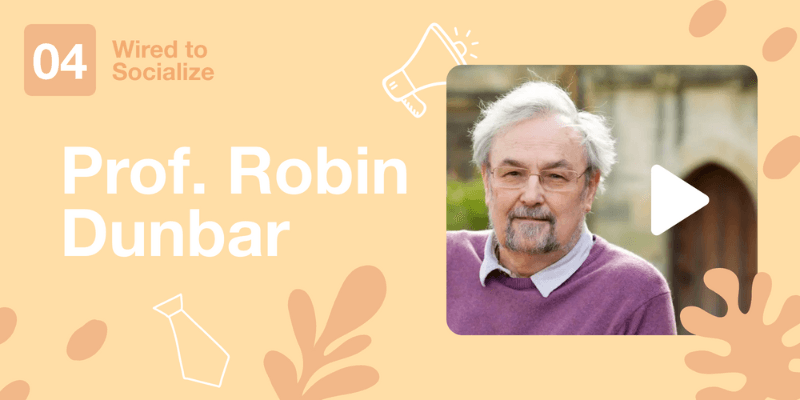
In the 4th installment of the series “Wired to Socialize,” hosted by Covve CEO Yiannis Gavrielides and featuring evolutionary psychologist Robin Dunbar, the focus is on understanding the structure and limitations of human social networks.
Central to this discussion is Dunbar’s number, which posits a limit of about 150 people in an individual’s social circle.
The Concept of Dunbar’s Number
- Dunbar’s number represents layers of relationships, each varying in closeness and importance
- The innermost circle includes about five people, signifying deep emotional attachments
- Time spent and invested in relationships decreases the further out a relationship is from the core group of five close contacts
This number does not represent a uniform group of relationships. Like ripples in a pond with oneself at the center, these relationships form layers of varying closeness and importance. The innermost circle, consisting of around five people, comprises those with whom one shares a deep emotional attachment. This inner circle demands significant time investment, and lack of regular contact can lead to a relationship drifting to a more distant layer.
Regular contact is crucial in maintaining these social bonds. For the core support group, it’s advised to meet once a week. The next layer, the sympathy group or social friends, should ideally gather once a month. These are the individuals you’d invite to personal gatherings or activities.
Dunbar’s number encapsulates the concept of meaningful relationships, characterized by trust, reciprocity, and shared history. The outermost layer, encompassing 100-150 people, includes extended family and others requiring minimal effort or time investment, with annual contact being sufficient. The 150 people form a group invited to significant life events such as weddings, bar mitzvahs, or funerals.
Beyond the 150, relationships become more transactional, covering acquaintances like colleagues or familiar faces at a coffee shop. These individuals are not typically involved in personal life events.
Expanding to Larger Social Layers
- A 1,500-person layer represents tribal connections, sharing cultural elements like language, music, humor, clothes, and more
- This layer fosters a sense of community trust despite the lack of personal acquaintances
- It historically provided crucial support in times of disaster or conflict
Beyond the tribe, the network extends to individuals whose faces are recognizable but with whom one has no personal connection. These are people who are just one degree away from being considered total strangers, as there is no personal connection, but a familiar face. With these relationships, trust is the most fickle.
The intricate layers of human social networks, as explored in “Wired to Socialize,” reveal much about our interpersonal dynamics and the limits of our social capacities. Understanding Dunbar’s number and the structure of our social circles not only enlightens us about our relationships but also guides us in nurturing and prioritizing them effectively.
Whether it’s the close bonds in our inner circle or the broader connections that form our social and tribal layers, each has its significance and requires a different level of attention and effort.
Observe the Ripples of Your Network
We invite you to reflect on your own social network. Consider the different layers of relationships in your life and how you maintain these connections. Are there areas where you could invest more time or effort? Remember, the quality of our relationships profoundly impacts our personal and social well-being.
Take a moment to reach out to someone in your inner circle, plan a gathering with your social friends, or even acknowledge an acquaintance. By actively engaging with and understanding the dynamics of your social circles, you can enrich your relationships and foster a more connected, supportive community.
Watch the full episode here and gain further clarity on who your closest contacts are, and how frequently you would want to contact them.
Written on 04 Dec 2023.
Related Posts: